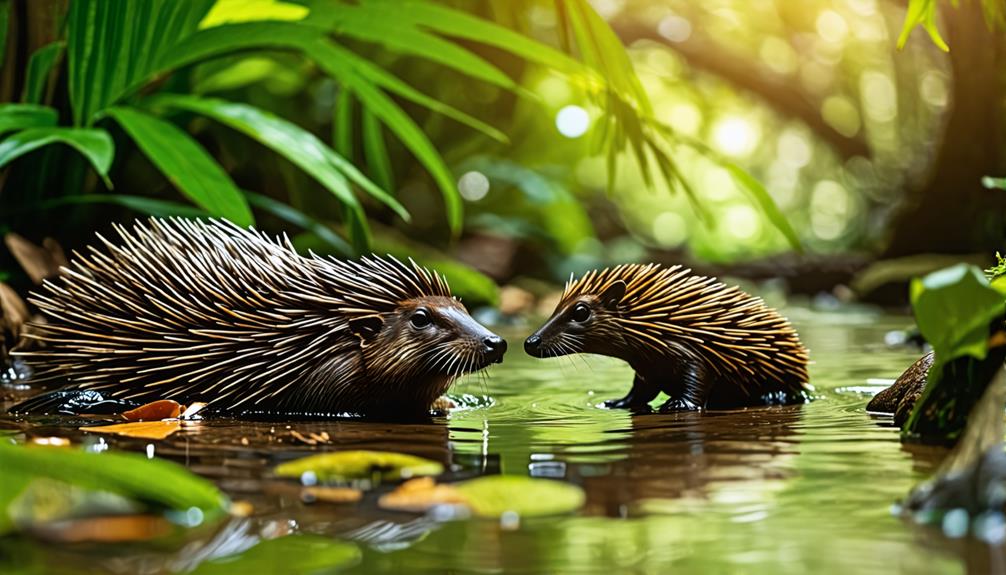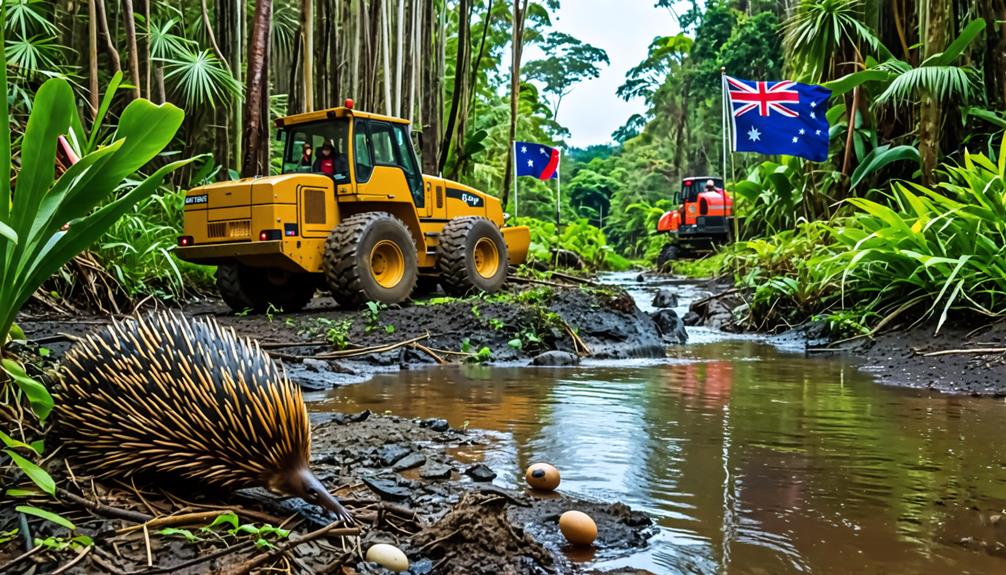You might think you know all about mammals, but there's a group that breaks the mold entirely. In Australia and New Guinea, you'll find the world's only egg-laying mammals, known as monotremes. These peculiar creatures, including the duck-billed platypus and echidnas, challenge everything you've learned about mammalian reproduction. They're not just oddities; they're evolutionary marvels that have survived for millions of years. Their unique characteristics and adaptations raise intriguing questions about mammalian evolution and the diverse paths nature can take. But what makes these animals truly special, and why have they remained confined to such a small part of the world?
Key Takeaways
- Monotremes, including platypuses and echidnas, are the only egg-laying mammals in existence.
- These unique mammals are found exclusively in Australia and New Guinea.
- Monotremes lay leathery eggs and nourish their young with milk secreted from belly pores.
- There are five living monotreme species: the duck-billed platypus and four echidna species.
Monotremes: Unique Mammalian Oddities

When you think of mammals, egg-laying probably isn't the first characteristic that comes to mind, yet monotremes defy expectations as nature's only living egg-laying mammals. Found exclusively in Australia and New Guinea, these unique creatures include the duck-billed platypus and four species of echidnas.
Their unique evolutionary lineage is evident in their reptile-like features, such as a cloaca for both waste and reproduction. Monotremes lay leathery eggs and nourish their young with milk secreted through belly pores.
The platypus's bill contains thousands of electroreceptors for hunting, while echidnas use sticky tongues to catch insects. Despite their fascinating adaptations, these animals face significant conservation challenges.
Habitat degradation and climate change threaten their survival, making protection efforts essential. As the last remnants of a once-diverse group, monotremes represent a critical link in mammalian evolution.
Platypus and Echidna Characteristics
Today, we'll explore the distinct characteristics that set platypuses and echidnas apart from other mammals, showcasing their remarkable adaptations to their unique ecological niches.
As monotremes, these egg-laying mammals have evolved fascinating features:
Platypuses possess 40,000 electroreceptors in their duck-like bills, allowing them to detect prey underwater.
Echidnas are covered in spiny quills and use their sticky tongues to catch ants and termites.
Both species lay leathery eggs, incubating them in burrows or pouches.
Male platypuses have venomous spurs on their hind legs for defense.
You'll find that these animals have adapted to their environments in extraordinary ways.
Platypuses use their electroreceptors to navigate murky waters, while echidnas can enter a state of torpor to conserve energy during harsh weather.
These unique traits make monotremes truly exceptional among mammals.
Conservation Challenges and Efforts

Conservation efforts for monotremes face mounting challenges as these unique egg-laying mammals grapple with habitat loss and environmental changes.
You'll find platypus populations dwindling, now classified as near threatened, while some echidnas, like the Western Long-Beaked species, are critically endangered. Urban development, agriculture, and climate change are eroding their habitats, pushing these ancient creatures to the brink.
To combat these threats, conservationists are establishing protected areas and launching habitat restoration projects. They're also running public awareness campaigns to educate communities about the importance of these remarkable animals.
Ongoing research into monotreme ecology and population dynamics is essential for developing effective conservation strategies.
As the last remnants of a once-diverse lineage, modern monotremes urgently need your support. By understanding their plight and contributing to conservation efforts, you can help guarantee these egg-laying mammals continue to thrive in Australia and New Guinea.
Conclusion
You've now learned about the world's only egg-laying mammals, the monotremes.
These unique creatures, found exclusively in Australia and New Guinea, challenge our understanding of mammalian evolution.
As you consider the platypus's duck-like bill and the echidna's spiny quills, remember that these animals face significant conservation challenges.
It's up to you to support efforts protecting their habitats.
By doing so, you'll help guarantee these fascinating mammals continue to thrive for generations to come.

Leave a Reply